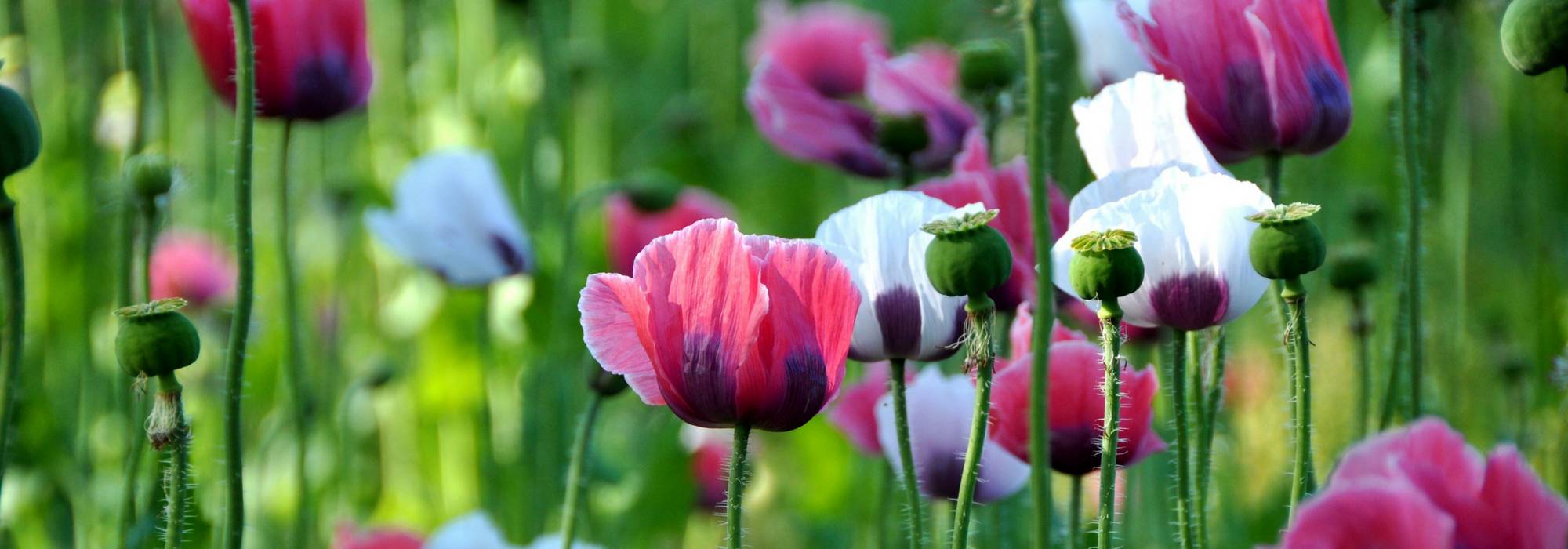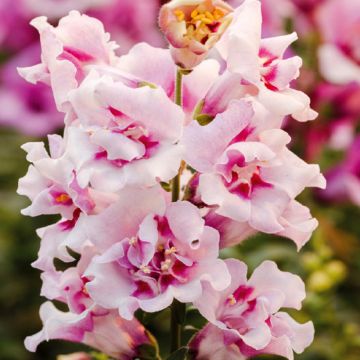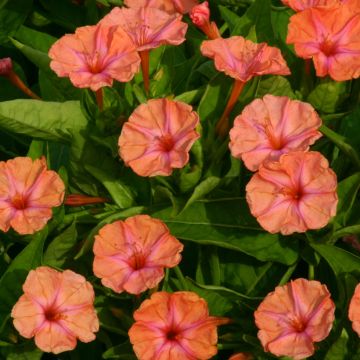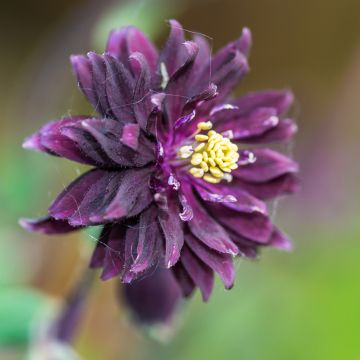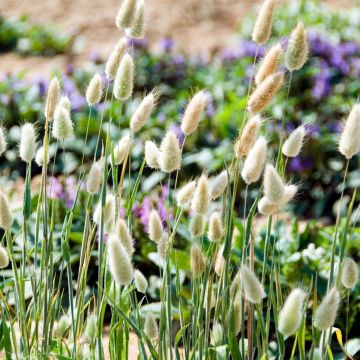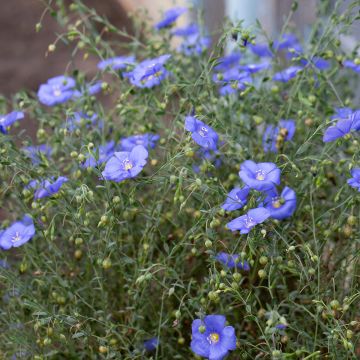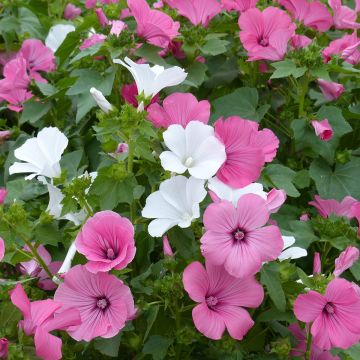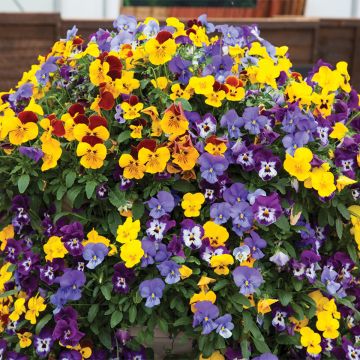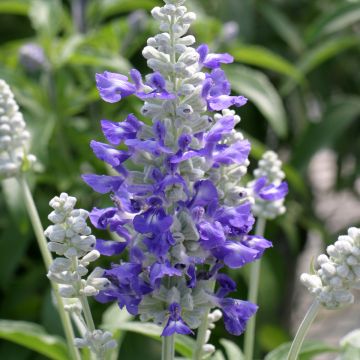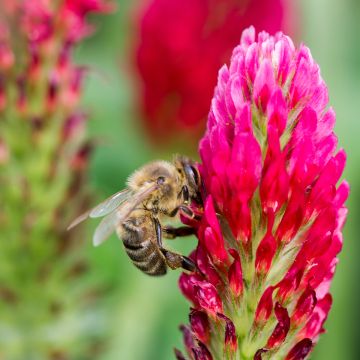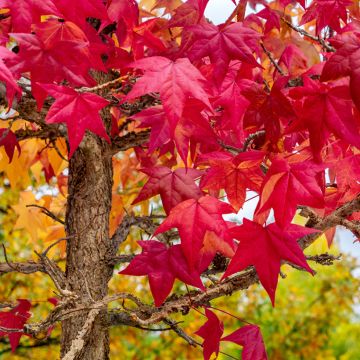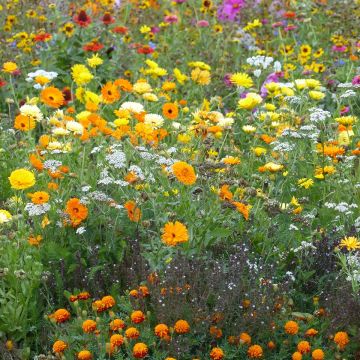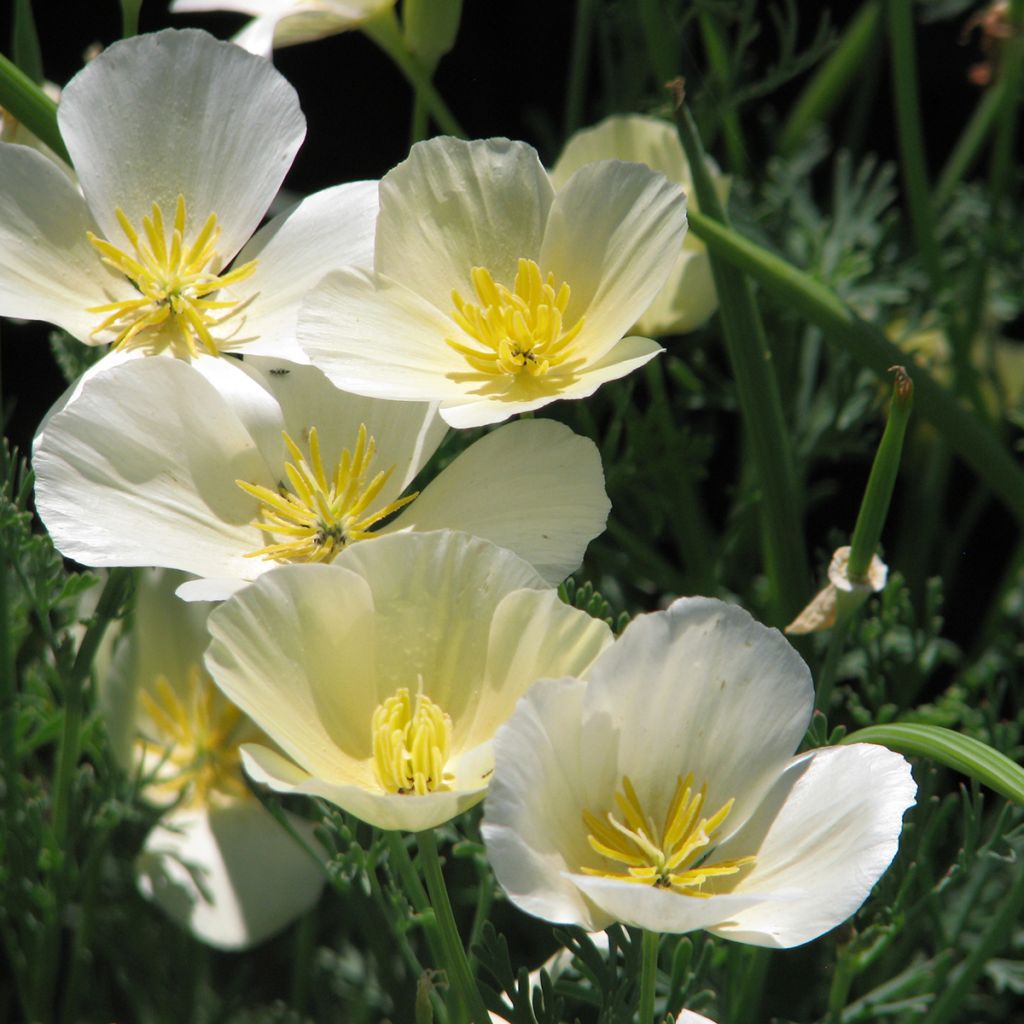

Graines de Pavot de Californie Alba - Eschscholzia californica
Eschscholzia californica 'Alba'
Eschscholzia californica Alba
California poppy, Golden poppy, California sunlight, Cup of gold
the seeds worked well and the flowers are very, very pretty
Gabryel, 15/06/2025
Special offer!
Receive a €20 voucher for any order over €90 (excluding delivery costs, credit notes, and plastic-free options)!
1- Add your favorite plants to your cart.
2- Once you have reached €90, confirm your order (you can even choose the delivery date!).
3- As soon as your order is shipped, you will receive an email containing your voucher code, valid for 3 months (90 days).
Your voucher is unique and can only be used once, for any order with a minimum value of €20, excluding delivery costs.
Can be combined with other current offers, non-divisible and non-refundable.
Home or relay delivery (depending on size and destination)
Schedule delivery date,
and select date in basket
This plant carries a 6 months recovery warranty
More information
We guarantee the quality of our plants for a full growing cycle, and will replace at our expense any plant that fails to recover under normal climatic and planting conditions.

Would this plant suit my garden?
Set up your Plantfit profile →
Description
Eschscholzia californica 'Alba' is a selection of pastel California Poppy, which brings a tender and countryside touch to any decor. The cream-white silk-woven flowers of this poppy sway above finely cut, silver-tinged foliage, which is highly ornamental. They bloom from spring to late summer depending on the climate and sowing date. Equally at home in a flowery meadow or sophisticated borders, this short-lived plant enthusiastically tolerates heat, drought, and poor soils. It self-seeds and naturalizes very easily in light soil, but not always in the same colour if several varieties are planted nearby.
The 'Alba' California Poppy is a pale-flowered form of Eschscholzia californica, an annual to short-lived perennial herbaceous plant native to California and the southwestern United States. This taprooted plant quickly forms a clump of foliage about 25 to 30cm (10 to 12in) in all directions. Its leaves are pinnate, finely cut, with a colour ranging from bluish-green to silver-green, particularly attractive, especially when it is hot. Flowering occurs from spring to summer and into autumn. Autumn sowings (in mild climates) flower as early as May, while spring sowings flower from July to September-October. The flowers are borne 35cm (14in) above the ground. They are 5cm (2in) wide cups, formed by 5 to 6 silky petals, reflecting the sun, and only opening if it is generous. This flowering is both nectar-rich and pollen-rich. It is followed by the formation of long, slender capsules, 7 to 8cm (3in) long, with a glaucous green colour, containing tiny seeds. Once dried, the capsules release a large quantity of small seeds that germinate in light soil.
California poppies are a blessing for dry gardens, rockeries, and coastal gardens. They can be sown in perennial borders, natural areas of the garden, or even in pots. These plants are perfect for low-maintenance or weekend gardens. Their colours blend beautifully with light blues and mauves. To easily create a small flowery meadow, mix their seeds with those of Damask Nigella, poppies, Echinops ritro, and bunny tails (Lagurus ovatus), which flower for a long time and appreciate the same growing conditions. Eschscholzia are beautiful, but ephemeral, in bouquets.
Eschscholzia californica 'Alba' in pictures
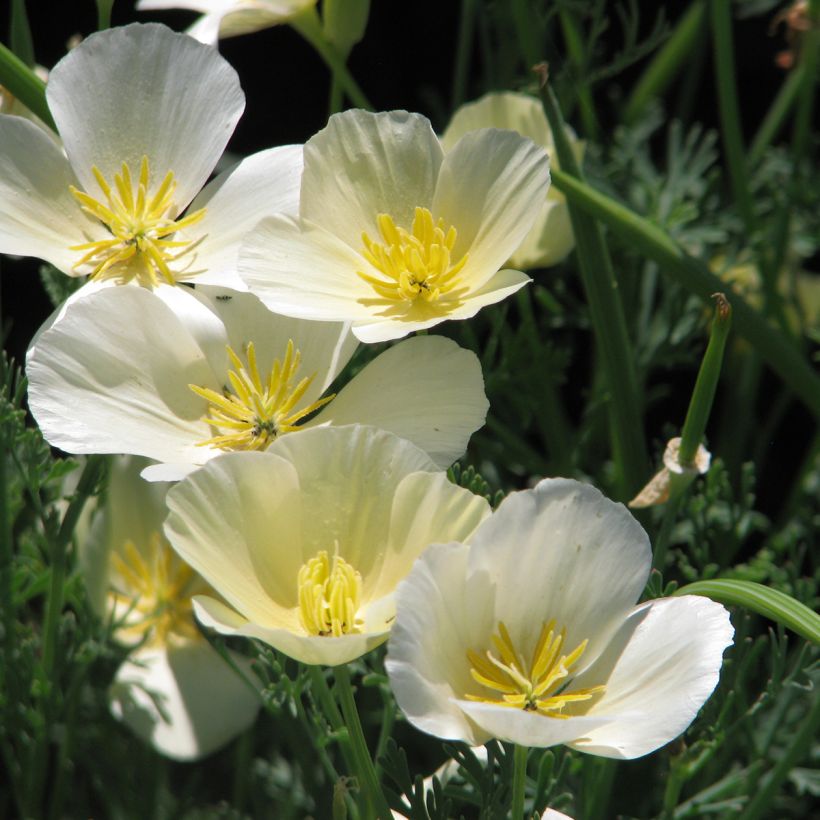

Flowering
Foliage
Plant habit
Botanical data
Eschscholzia
californica
Alba
Papaveraceae
California poppy, Golden poppy, California sunlight, Cup of gold
Cultivar or hybrid
Other Flower seeds A to Z
View all →Planting and care
Sow the seeds of Californian poppy directly in the ground, from March to May or in September, the seeds will survive the winter without damage. Seeds sown in autumn will bloom in spring. Choose a very sunny spot, in all poor and well-drained soils, well loosened. Bury the seeds at a depth of 1cm (0in), in small holes spaced 15cm (6in) apart. Cover the seeds so that they do not receive any light. Water regularly, keeping the soil moist, especially during dry periods. Germination usually takes 14 to 21 days. When the seedlings are large enough to handle, space the plants 15cm (6in) apart. You can also sow Californian poppies indoors from February to March at a temperature of 15-21°C (59-69.8°F).
When the seedlings are large enough to handle, transplant them into pots and grow them in a cool place until the plants are large enough to be planted outside.
Cultivation:
These plants require full sun and a perfectly drained, sandy or rocky soil. The soil should be poor. In too rich soil, the plant becomes giant, it becomes huge and eventually falls over. In the garden, it is content with the most ungrateful situations, as long as it is exposed to the sun's rays: gravel, rockery filled with stones, dry slope, raised bed. It is perfectly possible to grow them in pots and containers. Because of their taproot, these poppies do not like to be moved, which is why it is best to sow them in place.
Sowing period
Intended location
Planting & care advice
-
, onOrder confirmed
Reply from on Promesse de fleurs
Similar products
Haven't found what you were looking for?
Hardiness is the lowest winter temperature a plant can endure without suffering serious damage or even dying. However, hardiness is affected by location (a sheltered area, such as a patio), protection (winter cover) and soil type (hardiness is improved by well-drained soil).

Photo Sharing Terms & Conditions
In order to encourage gardeners to interact and share their experiences, Promesse de fleurs offers various media enabling content to be uploaded onto its Site - in particular via the ‘Photo sharing’ module.
The User agrees to refrain from:
- Posting any content that is illegal, prejudicial, insulting, racist, inciteful to hatred, revisionist, contrary to public decency, that infringes on privacy or on the privacy rights of third parties, in particular the publicity rights of persons and goods, intellectual property rights, or the right to privacy.
- Submitting content on behalf of a third party;
- Impersonate the identity of a third party and/or publish any personal information about a third party;
In general, the User undertakes to refrain from any unethical behaviour.
All Content (in particular text, comments, files, images, photos, videos, creative works, etc.), which may be subject to property or intellectual property rights, image or other private rights, shall remain the property of the User, subject to the limited rights granted by the terms of the licence granted by Promesse de fleurs as stated below. Users are at liberty to publish or not to publish such Content on the Site, notably via the ‘Photo Sharing’ facility, and accept that this Content shall be made public and freely accessible, notably on the Internet.
Users further acknowledge, undertake to have ,and guarantee that they hold all necessary rights and permissions to publish such material on the Site, in particular with regard to the legislation in force pertaining to any privacy, property, intellectual property, image, or contractual rights, or rights of any other nature. By publishing such Content on the Site, Users acknowledge accepting full liability as publishers of the Content within the meaning of the law, and grant Promesse de fleurs, free of charge, an inclusive, worldwide licence for the said Content for the entire duration of its publication, including all reproduction, representation, up/downloading, displaying, performing, transmission, and storage rights.
Users also grant permission for their name to be linked to the Content and accept that this link may not always be made available.
By engaging in posting material, Users consent to their Content becoming automatically accessible on the Internet, in particular on other sites and/or blogs and/or web pages of the Promesse de fleurs site, including in particular social pages and the Promesse de fleurs catalogue.
Users may secure the removal of entrusted content free of charge by issuing a simple request via our contact form.
The flowering period indicated on our website applies to countries and regions located in USDA zone 8 (France, the United Kingdom, Ireland, the Netherlands, etc.)
It will vary according to where you live:
- In zones 9 to 10 (Italy, Spain, Greece, etc.), flowering will occur about 2 to 4 weeks earlier.
- In zones 6 to 7 (Germany, Poland, Slovenia, and lower mountainous regions), flowering will be delayed by 2 to 3 weeks.
- In zone 5 (Central Europe, Scandinavia), blooming will be delayed by 3 to 5 weeks.
In temperate climates, pruning of spring-flowering shrubs (forsythia, spireas, etc.) should be done just after flowering.
Pruning of summer-flowering shrubs (Indian Lilac, Perovskia, etc.) can be done in winter or spring.
In cold regions as well as with frost-sensitive plants, avoid pruning too early when severe frosts may still occur.
The planting period indicated on our website applies to countries and regions located in USDA zone 8 (France, United Kingdom, Ireland, Netherlands).
It will vary according to where you live:
- In Mediterranean zones (Marseille, Madrid, Milan, etc.), autumn and winter are the best planting periods.
- In continental zones (Strasbourg, Munich, Vienna, etc.), delay planting by 2 to 3 weeks in spring and bring it forward by 2 to 4 weeks in autumn.
- In mountainous regions (the Alps, Pyrenees, Carpathians, etc.), it is best to plant in late spring (May-June) or late summer (August-September).
The harvesting period indicated on our website applies to countries and regions in USDA zone 8 (France, England, Ireland, the Netherlands).
In colder areas (Scandinavia, Poland, Austria...) fruit and vegetable harvests are likely to be delayed by 3-4 weeks.
In warmer areas (Italy, Spain, Greece, etc.), harvesting will probably take place earlier, depending on weather conditions.
The sowing periods indicated on our website apply to countries and regions within USDA Zone 8 (France, UK, Ireland, Netherlands).
In colder areas (Scandinavia, Poland, Austria...), delay any outdoor sowing by 3-4 weeks, or sow under glass.
In warmer climes (Italy, Spain, Greece, etc.), bring outdoor sowing forward by a few weeks.






























